
Navigation is a field of study that focuses on the process of monitoring and controlling the movement of a craft or vehicle from one place to another. The field of navigation includes four general categories: land navigation, marine navigation, aeronautic navigation, and space navigation.

Sextans is a minor equatorial constellation which was introduced in 1687 by Johannes Hevelius. Its name is Latin for the astronomical sextant, an instrument that Hevelius made frequent use of in his observations.

A sextant is a doubly reflecting navigation instrument that measures the angular distance between two visible objects. The primary use of a sextant is to measure the angle between an astronomical object and the horizon for the purposes of celestial navigation.

Celestial navigation, also known as astronavigation, is the ancient and continuing modern practice of position fixing using stars and other celestial bodies that enables a navigator to accurately determine his or her actual current physical position in space without having to rely solely on estimated positional calculations, commonly known as "dead reckoning", made in the absence of GPS or other similar modern electronic or digital means.

Troughton & Simms was a British scientific instrument firm. It was formed when Edward Troughton in his old age took on William Simms as a partner in 1826. It became a limited company in 1915 and in 1922 it merged with T. Cooke & Sons to form Cooke, Troughton & Simms.
Navigational instruments refers to the instruments used by nautical navigators and pilots as tools of their trade. The purpose of navigation is to ascertain the present position and to determine the speed, direction etc. to arrive at the port or point of destination.

The term Jacob's staff is used to refer to several things, also known as cross-staff, a ballastella, a fore-staff, a ballestilla, or a balestilha. In its most basic form, a Jacob's staff is a stick or pole with length markings; most staffs are much more complicated than that, and usually contain a number of measurement and stabilization features. The two most frequent uses are:

The octant, also called reflecting quadrant, is a measuring instrument used primarily in navigation. It is a type of reflecting instrument.
Meridian altitude is a method of celestial navigation to calculate an observer's latitude. It notes the altitude angle of an astronomical object above the horizon at culmination.

Vice-Admiral John Campbell (1720–1790) was born in the parish of Kirkbean in Kirkcudbrightshire, Scotland. Campbell was a British naval officer, navigational expert and colonial governor.
In astronomy, sextants are devices depicting a sixth of a circle, used primarily for measuring the position of stars. There are two types of astronomical sextants, mural instruments and frame-based instruments.
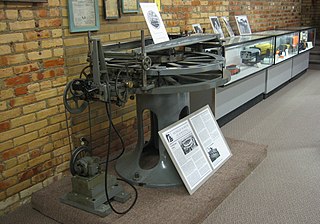
A dividing engine is a device employed to mark graduations on measuring instruments to allow for reading smaller measurements than can be allowed by directly engraving them. The well-known vernier scale and micrometer screw-gauge are classic examples that make use of such graduations.
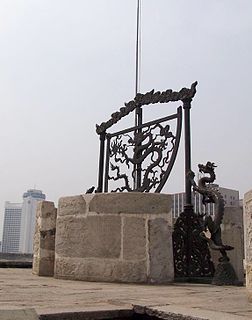
A quadrant is an instrument that is used to measure angles up to 90°. Different versions of this instrument could be used to calculate various readings, such as longitude, latitude, and time of day. It was originally proposed by Ptolemy as a better kind of astrolabe. Several different variations of the instrument were later produced by medieval Muslim astronomers. Mural quadrants were important astronomical instruments in the 18th century European observatories, establishing a use for positional astronomy.
Reflecting instruments are those that use mirrors to enhance their ability to make measurements. In particular, the use of mirrors permits one to observe two objects simultaneously while measuring the angular distance between the objects. While reflecting instruments are used in many professions, they are primarily associated with celestial navigation as the need to solve navigation problems, in particular the problem of the longitude, was the primary motivation in their development.
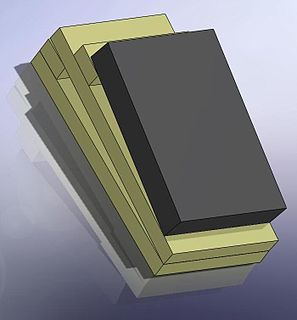
The Bris sextant is not a sextant proper, but is a small angle-measuring device that can be used for navigation. The Bris is, however, a true reflecting instrument which derives its high accuracy from the same principle of double reflection which is fundamental to the octant, the true sextant, and other reflecting instruments. It differs from other sextants primarily in being a fixed angle sextant, capable of measuring a few specific angles.
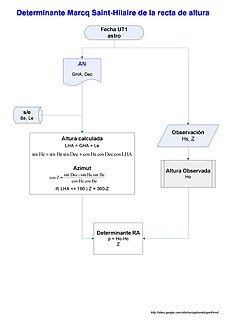
The navigational algorithms are the quintessence of the executable software on portable calculators or PDA as an aid to the art of navigation, this attempt article describe both algorithms and software for "PC-PDA" implementing different calculation procedures for navigation . The calculation power obtained by the languages: Basic, "C", Java, etc. .., from portable calculators or PDAs, has made it possible to develop programs that allow calculating the position without the need for tables, in fact they have some basic tables with the correction factors for each year and calculate the values "on the fly" at runtime.
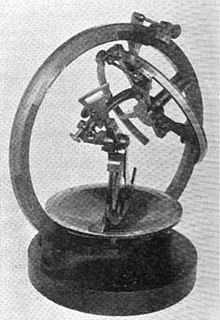
The Equatorial Sextant was made by William Austin Burt. The purpose of this type of sextant was to get an accurate position of a ship at sea. Burt applied the principles of his earlier solar compass invention to this new navigational instrument.

Spencer, Browning & Rust was a London firm that manufactured instruments for navigational use during the 18th and 19th centuries. The predecessor company of Spencer and Browning was established by William Spencer and Samuel Browning in 1778, before they entered into partnership with Ebenezer Rust in 1784. After the death of Ebenezer Rust's son, the successor business was known as Spencer, Browning & Co. The firm of Spencer, Browning & Rust made a variety of navigational instruments, including octants and sextants.
The bubble octant and bubble sextant are air navigation instruments. Although an instrument is called a "bubble sextant", it may actually be a bubble octant.













